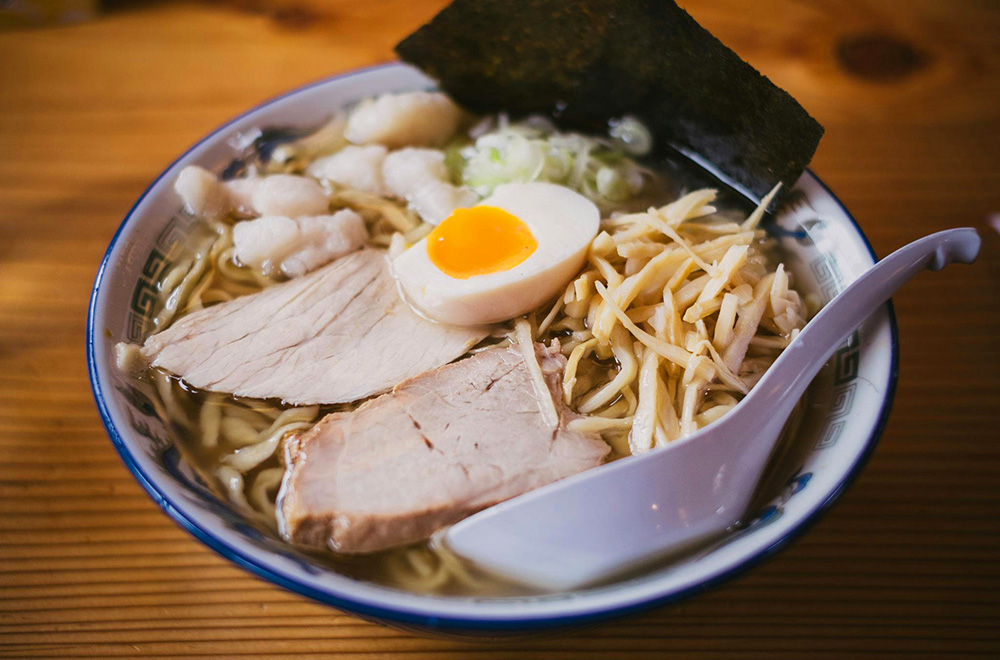
Ramen, a beloved Japanese dish, offers a tantalizing journey through Japan’s diverse culinary landscape. Each region has its own take on ramen, with distinct broths, noodles, and toppings that reflect local tastes and traditions. Here’s a guide to the different kinds of ramen typical to Japan’s main regions, optimized to help you discover the best regional ramen and boost your understanding of this iconic dish.
1. Hokkaido: Sapporo Ramen
Key Characteristics: Rich Miso Broth, Thick Curly Noodles
Flavor Profile: Hokkaido, Japan’s northernmost island, is famous for its Sapporo ramen, which features a hearty miso-based broth. This ramen often includes sweet corn, butter, bean sprouts, and pork, making it perfect for the region’s cold climate. The thick, curly noodles help soak up the rich broth, delivering a satisfying and warming meal.
2. Tohoku: Kitakata Ramen
Key Characteristics: Soy Sauce Broth, Flat Noodles
Flavor Profile: In the Tohoku region, Kitakata ramen stands out with its light yet flavorful soy sauce-based broth. The flat, wide noodles are slightly chewy, and the dish is often topped with generous slices of pork (chashu), green onions, and bamboo shoots. Kitakata ramen is particularly popular in Fukushima Prefecture and is known for its refreshing taste.
3. Kanto: Tokyo Shoyu Ramen
Key Characteristics: Soy Sauce Broth, Medium-Thin Noodles
Flavor Profile: Tokyo, Japan’s bustling capital, is home to Tokyo Shoyu ramen, a classic style featuring a clear, soy sauce-based broth. This ramen is often light yet savory, with medium-thin, slightly curly noodles. Toppings typically include pork, spinach, green onions, and a soft-boiled egg (ajitama). Tokyo Shoyu ramen is a staple of ramen culture and offers a balanced, easy-to-enjoy flavor.
4. Chubu: Nagoya Taiwan Ramen
Key Characteristics: Spicy Broth, Minced Pork
Flavor Profile: Nagoya, located in the Chubu region, is known for its unique Taiwan ramen, which actually originated in Japan despite its name. This ramen is characterized by its spicy broth, seasoned with chili oil and garlic, and topped with minced pork, chives, and green onions. The noodles are medium-thin, and the dish delivers a fiery kick, perfect for those who enjoy spicy food.
5. Kansai: Osaka Ramen
Key Characteristics: Variety of Broths, Customizable Toppings
Flavor Profile: The Kansai region, particularly Osaka, is famous for its vibrant food culture, and ramen here reflects that diversity. Osaka ramen can vary widely in terms of broth, ranging from soy sauce to miso and even tonkotsu (pork bone). The noodles are typically medium-thin and can be customized with a variety of toppings, making it a versatile and popular choice for ramen lovers.
6. Chugoku: Onomichi Ramen
Key Characteristics: Soy Sauce and Pork Back Fat Broth, Flat Noodles
Flavor Profile: Onomichi ramen, from Hiroshima Prefecture in the Chugoku region, is known for its rich soy sauce broth combined with pork back fat (seabura). This creates a flavorful and slightly oily soup that’s perfect for the region’s palate. The flat, firm noodles complement the broth, and common toppings include green onions, chashu, and bamboo shoots.
7. Shikoku: Tokushima Ramen
Key Characteristics: Tonkotsu-Shoyu Broth, Raw Egg Topping
Flavor Profile: Tokushima ramen from Shikoku Island features a unique blend of tonkotsu (pork bone) and soy sauce broth, giving it a rich, slightly sweet flavor. The noodles are thin and straight, and the dish is often topped with chashu, bamboo shoots, and a raw egg, which adds a creamy texture to the broth when mixed in.
8. Kyushu: Hakata Ramen
Key Characteristics: Rich Tonkotsu Broth, Thin Straight Noodles
Flavor Profile: Kyushu, particularly Fukuoka’s Hakata district, is renowned for Hakata ramen. This ramen features a creamy, rich tonkotsu broth made from boiling pork bones for hours, resulting in a deep umami flavor. The noodles are ultra-thin and straight, cooked al dente to retain their bite. Toppings typically include pork, green onions, and pickled ginger (beni shoga), with an optional dollop of garlic.
Conclusion
Japan’s regional ramen varieties offer a unique glimpse into the country’s rich culinary heritage. Whether you prefer the hearty miso of Hokkaido or the rich tonkotsu of Kyushu, each type of ramen reflects the local flavors and culture of its region. As you explore Japan or your local ramen shop, keep an eye out for these distinct regional specialties and enjoy the diverse world of Japanese ramen.
Ready to find your dream home in this beautiful country? Reach out to us at contact@akiyaheaven.jp.
